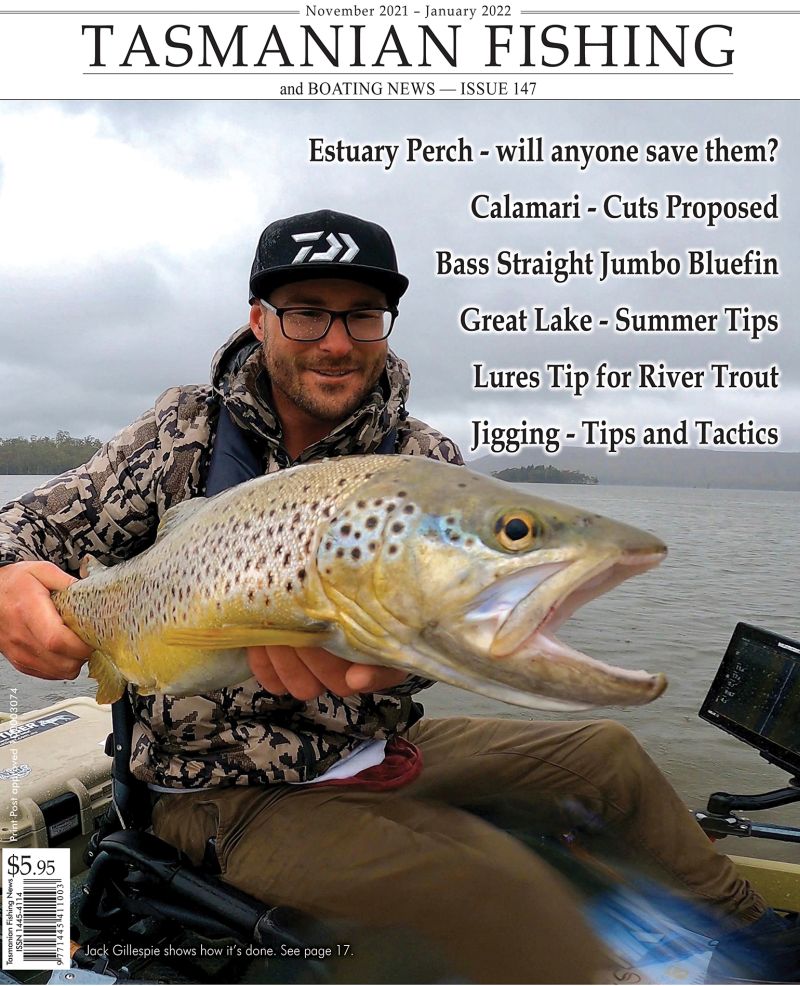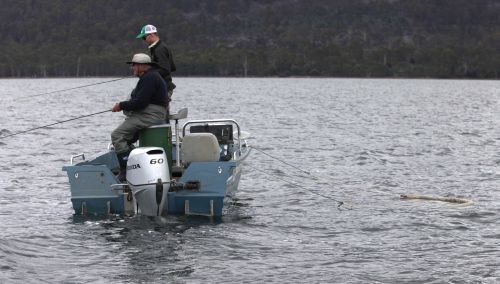From the Archives ...
Sea Run Trout
Mid Sea-Run Season Report
Sea-run trout fishing this year got off to a cracking start in most areas, with the majority of anglers employing nearly every trout fishing technique to secure fish in local estuaries statewide.
Even those anglers fishing the "off-season" lower down in our estuaries for sea-trout commented on the number of fish moving in early August.
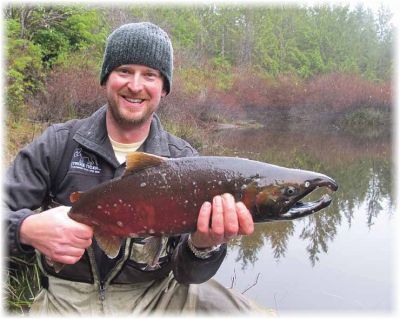 Presented from Issue 108, February 2014
Presented from Issue 108, February 2014
Michal Rybka shares some useful trout techniques that he discovered on a recent trip to the Canadian wilderness.
Introduction
For the third time now, I have been fortunate enough to fish for trout and salmon in British Columbia, Canada.
The most recent trip was certainly the most enlightening, with lots learned. My experience started when I walked into one particular tackle store in the city of Vancouver. While the size of the shop was the first thing I noticed, I was more intrigued by what was on the shelves!
- Written by Stephen Smith - Rubicon Web and Technology Training
- Category: Trout Fishing
- Hits: 5338
 Presented from Issue 108, February 2014
Presented from Issue 108, February 2014
Michal Rybka shares some useful trout techniques that he discovered on a recent trip to the Canadian wilderness.
Introduction
For the third time now, I have been fortunate enough to fish for trout and salmon in British Columbia, Canada.
The most recent trip was certainly the most enlightening, with lots learned. My experience started when I walked into one particular tackle store in the city of Vancouver. While the size of the shop was the first thing I noticed, I was more intrigued by what was on the shelves!
- Written by Stephen Smith - Rubicon Web and Technology Training
- Category: Trout Fishing
- Hits: 4996
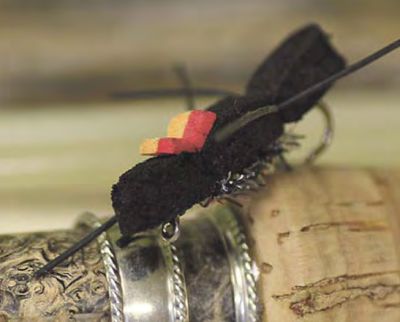 Presented from Issue 107, December 2013
Presented from Issue 107, December 2013
What a crazy start to the 2013 fishing season it has been. Rain, wind, lots of snow and then just for something a bit different we had some rain, wind and more snow! Rivers have more or less been flooded and dirty since July, the lakes have been blanketed in that white stuff for a lot of the time and the wind, well let’s not get started about that god forsaken wind. No word of a lie, it’s been doing my head in. Even contemplated selling all my fly gear and taking up a new hobby, for a brief second!
- Written by Stephen Smith - Rubicon Web and Technology Training
- Category: Trout Fishing
- Hits: 5049
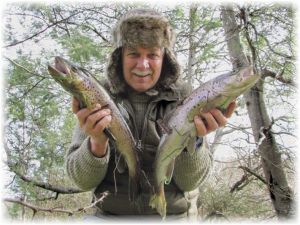 Presented from Issue 106, October 2013
Presented from Issue 106, October 2013
The way many start trout fishing is with a cheap little rod and a few worms. Bait fishing is one of the most enjoyable ways of fishing and often the least expensive too - no matter if it is trout - or from a jetty fishing for salt water species.
This article is on the simple basics of bait fishing for trout. There are several methods used to catch trout, and most novice trout anglers begin by learning to catch trout on light spinning tackle and bait fish first, before moving on up to the more advanced methods of trout fishing like spinning with spinners, hard body and soft plastic lures.
- Written by Stephen Smith - Rubicon Web and Technology Training
- Category: Trout Fishing
- Hits: 11781
Read more: Trout on bait - Adrian WebbTrout on bait - Adrian Webb
Presented from Issue 105, August 2013
For those of those of us that don’t bother to fish all that much on the waters that are open all year the closed season takes a toll. You spend the cold winter months sorting out and cleaning all your tackle, doing the necessary maintenance on the boat and restocking the fly boxes with all the favourite patterns and no doubt some fancy new ones.
- Written by Stephen Smith - Rubicon Web and Technology Training
- Category: Trout Fishing
- Hits: 4844
Presented from Issue 105, August 2013
Christopher Bassano fishes over 250 days a year. This interview was recorded just before he headed off to fish for Australia in the World Fly Fishing Championships in Norway 14-17 August 2013.
I live on a small stream and at the start of the season I like to go off on a bit of a discovery mission and fish the headwaters of the creeks and rivers I feel an affinity with.
These small rivers include the St Pats, Meander, Forester, Little Forester and others. The further up you go on these rivers the clearer and lower the levels. They are often less affected by the rain and runoff and you get some good opportunities. Get as close to the source as you can and you will find some good dry fly fishing. Don’t limit yourself to those I have mentioned. Most headwaters will hold trout.
- Written by Stephen Smith - Rubicon Web and Technology Training
- Category: Trout Fishing
- Hits: 10998
Read more: Tiny creeks and sea run trout - Christopher Bassano
Presented from Issue 105, August 2013
Bob is a professional fishing guide and guides for trout and estuary species. Check him out at www.fishwildtasmania.com
There are several things we look for in our early season trout waters. It is still winter and cold, so some of the things to consider are: Altitude as this dictates the water temperature and therefore feeding activity. Food for the fish. Availability of trout food is generally dictated by the quantity and quality of weed beds.
Quantity of fish.
Three waters which I believe fit all three requirements are:
- Written by Stephen Smith - Rubicon Web and Technology Training
- Category: Trout Fishing
- Hits: 11463
Presented from Issue 105, August 2013
We did a bit of a runaround Tasmania’s tackle stores to see what their tips for the first month or so of the tackle season were. We asked what the top three places to fish were, plus lures, flies, baits and a few other things.
Here is a rundown on their answers Whenever, and wherever you fish - anywhere, or for any fish in the world - ask the locals and especially ask at the local tackle store. They know what was caught today, yesterday and on what.
- Written by Stephen Smith - Rubicon Web and Technology Training
- Category: Trout Fishing
- Hits: 16819
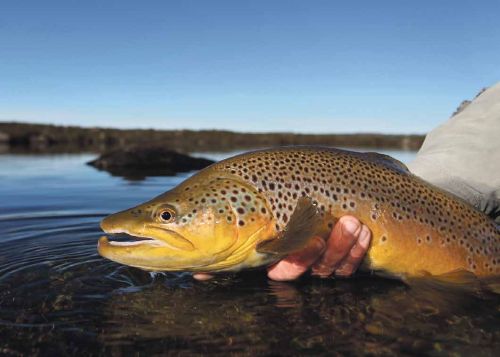 Presented from Issue 103, April 2013
Presented from Issue 103, April 2013
The months of April and May can offer very good trout fishing opportunities. Brown trout are well aware of the need to put on weight leading up to their annual spawning cycle. Now that many of the hatches are coming to an end, they are becoming more opportunistic feeders, once again.
As the brown trout season nears its end on the Sunday nearest to the 30th of April, male brown trout become very aggressive as they begin to pair up with potential females. Big wet flies, plastics and lures are often hit, just to get them out of their territory. Rainbows on the other hand, usually spawn later in the year with their closing season reflecting this by finishing one month later on the Sunday closest to the 31 st of May. So rainbows are mostly unaffected by the urge to spawn and continue to feed as normal right through to May.
- Written by Stephen Smith - Rubicon Web and Technology Training
- Category: Trout Fishing
- Hits: 5055
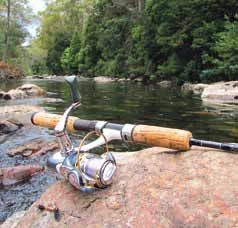 Presented from Issue 102, February 2013
Presented from Issue 102, February 2013
I began spinning for trout in 1965 in the Finnis River, Yundi, South. Australia, at the age of 19. Now at the age of 67 I am still loving it just as much, if not more than the first time. I now live at Sheffield, Tasmania and spin the rivers in the north, and in my opinion they are some of the best rivers in the State to fish. The Meander, Mersey, Leven, Iris, Vale, Emu and Flowerdale rivers are just a few of the many across the NorthWest to try.
- Written by Stephen Smith - Rubicon Web and Technology Training
- Category: Trout Fishing
- Hits: 7147
Current TFBN
Click above for current issue content. The current issue of TFBN is extensive and topical. In Tackle Stores, Newsagents and by subscription.
Delivered to your door for $48 for 2 years (8 issues). To subscribe, send Mike $48 via www.paypal.com.au . (Basic instructions are here) The email is at Contact Us. Your address will be included from PayPal.
Or phone Mike with your c/c handy on 0418129949
Please ensure your details are correct, for Mike to organise delivery.
TFBN Newsletter Sign up Form
Why not submit an article ?
When you have finished for the day, why not have a brag about the ones that didn't get away! Send Mike an article on your fishing (Click here for contact details), and we'll get it published here. Have fun fishing - tasfish.com
Category Descriptions
Here is a list of all of the Article Categories. The number in Brackets, eg (13) is the number of articles. Click on Derwent River and all articles relating to the Derwent will be displayed in the central area.
Articles by Category
-
Rivers (3)
-
Saltwater and Estuary Fishing (149)
-
Kayak Fishing (34)
-
Lakes (1)
-
Great Lake (62)
-
Lake Leake (52)
-
Woods Lake (16)
-
Lake Augusta (11)
-
Huntsman Lake (13)
-
Lake Pedder and Gordon (10)
-
Lake Dulverton (5)
-
Lake Crescent (6)
-
Tooms Lake (10)
-
Lake Mackintosh (2)
-
Lake Barrington (5)
-
Little Lake (8)
-
Meadowbank Lake (5)
-
Lake King William (7)
-
Lake St Clair (2)
-
Western Lakes (12)
-
Arthurs Lake (35)
-
Lake Echo (7)
-
Four Springs (54)
-
Lake Sorell (7)
-
Lake Burbury (6)
-
Other Lakes (57)
-
Brushy Lagoon (18)
-
Little Pine Lagoon (5)
-
Penstock Lagoon (16)
-
Brumbys Creek (7)
-
-
Events (48)
-
Estuary Fishing (0)
-
Coastal Catches (46)
-
Super Trawler (46)
-
IFS, DPIPWE, MAST and Peak Bodies (435)
-
Commercial Interests (98)
-
Other (24)
-
TFBN Back Issues (8)
-
Fly Fishing (67)
-
Trout Fishing (250)
-
Meteorology and Weather (8)
-
Jan’s Flies (50)
-
Tuna Fishing and other Game Fishing (86)
-
Cooking Fish (19)
-
Fishing Information (1)
-
Fishing Books (8)
-
Videos (5)
-
Tackle, Boats and other Equipment (146)
-
World Fly Fishing Championship 2019 (2)
Popular Tags
windyty.com
Visit https://www.windyty.com/
Rubicon Web and Technology Training
Hello everyone, I thought it would be a good time to introduce myself.
My name is Stephen Smith and I have been managing the website tasfish.com since May 2009.
It has been an epic journey of learning and discovery and I am indebted to Mike Stevens for his help, support and patience.
I am developing a new venture Rubicon Web and Technology Training ( www.rwtt.com.au ). The focus is two part, to develop websites for individuals and small business and to train people to effectively use technology in their everyday lives.
Please contact me via www.rwtt.com.au/contact-me/ for further information - Stephen Smith.
From the Archives ... (last chance)
Sea runners - Early Season Excitement - Christopher Bassano
Presented from Issue 100
Considering the world class quality of our sea trout fishery, these fish are not sought after by enough anglers. Sea runners live in the salt water and run up our estuaries and rivers from the start of August to the middle of November. At this time of the year, they are here to eat the many species of fish that are either running up the rivers to spawn or are living in and around the estuary systems. Trout, both sea run and resident (Slob Trout) feed heavily on these small fish which darken in colouration as they move further into fresh water reaches.
The majority of these predatory fish are brown trout with rainbows making up a very small percentage of the catch. They can be found all around the state but it would be fair to say that the east coast is the least prolific of all the areas. They still run up such rivers as the Georges (and many others) but their numbers along with the quality of the fishing elsewhere make it difficult to recommend the area above the larger northern, southern and western rivers.
Read more ...
